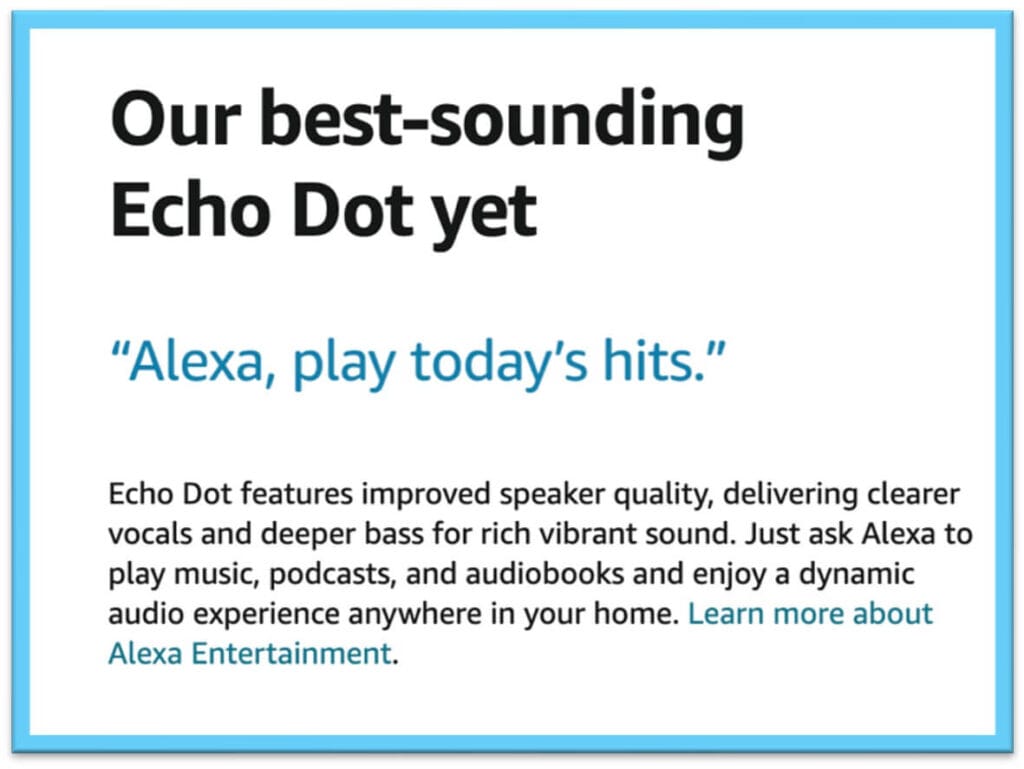Amazon Echo
- Content Strategy Project
- Adobe Photoshop, Adobe Illustrator
- San Francisco, CA
This project consists of reviewing the content experience across the customer lifecycle, assessing product content based on use case for prospective, new, and existing customers of Amazon Echo.

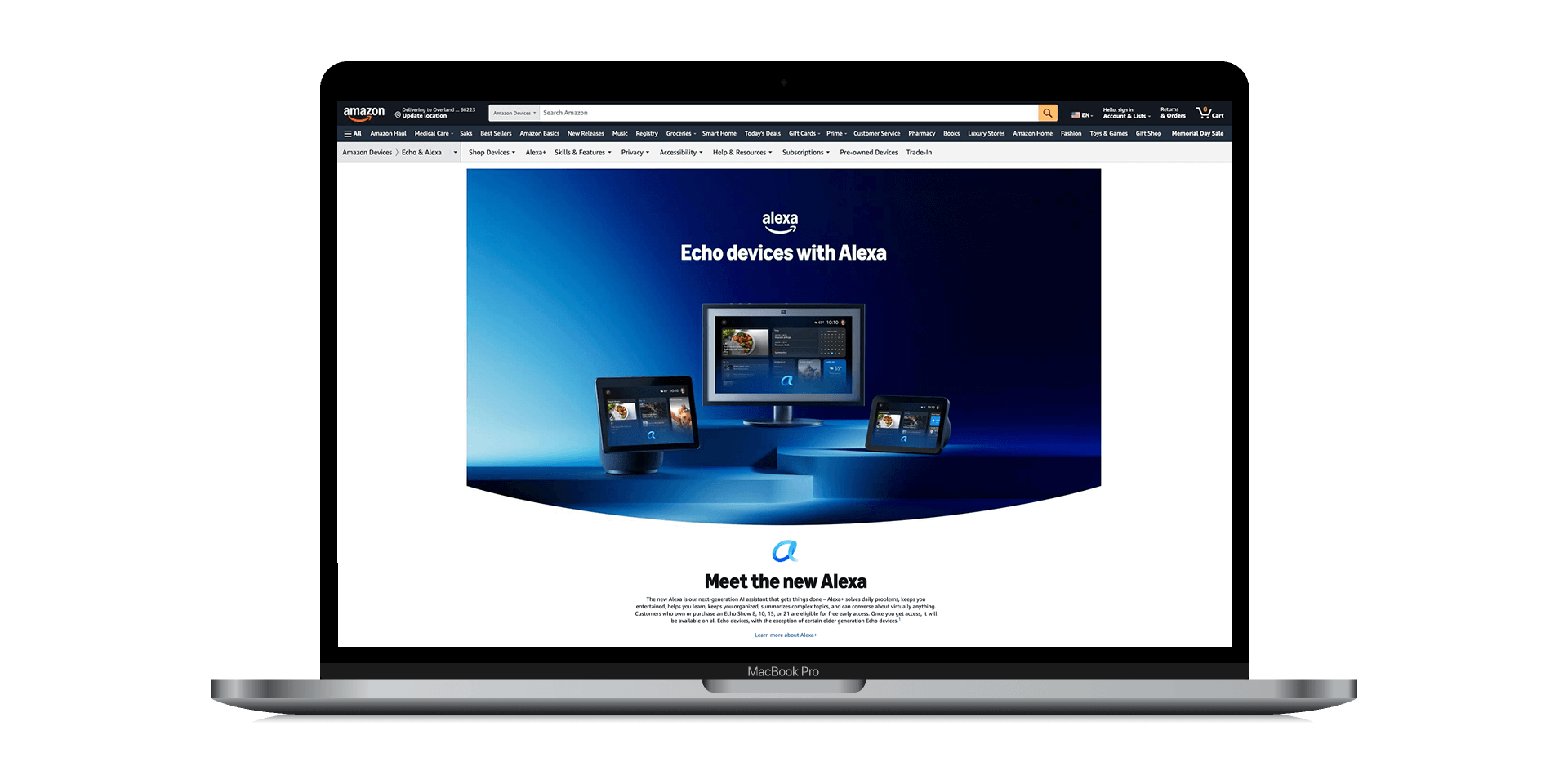
Background
The Amazon Echo is a series of smart speakers developed by Amazon that serve as a hub for the company’s voice-controlled personal assistant, Alexa. The first generation of the device, released in 2014, was a groundbreaking entry into the smart home market, allowing users to control their music, manage their daily tasks, and interact with a growing ecosystem of connected devices simply by using their voice. By integrating with Alexa, the Echo transformed the way people interacted with technology in their homes, making information and automation more accessible than ever before.
For this research, I created a UX persona. Her name is Elena, she is 40, works as a journalist and lives in the East Bay Area. For her, it is important to start the day listening to the daily news broadcast.

Elena the "Well-Informed" User
40 • Married • Journalist • Lafayette, CA
“I want to listen to the daily news broadcast when I wake up”
Content Inventory Analysis
Amazon is using an “outside-in” approach because its content is designed with the user’s perspective in mind—it is friendly, intuitive, and anticipates the user’s next question or action. This approach ensures that the entire user journey feels seamless and well-integrated. For example, a user browsing a product page can easily learn about the item, view detailed images, read reviews, customize their selection, make a purchase, and explore related products or services—all without leaving the page or facing confusion. This smooth experience reflects Amazon’s focus on user needs and expectations at every step.
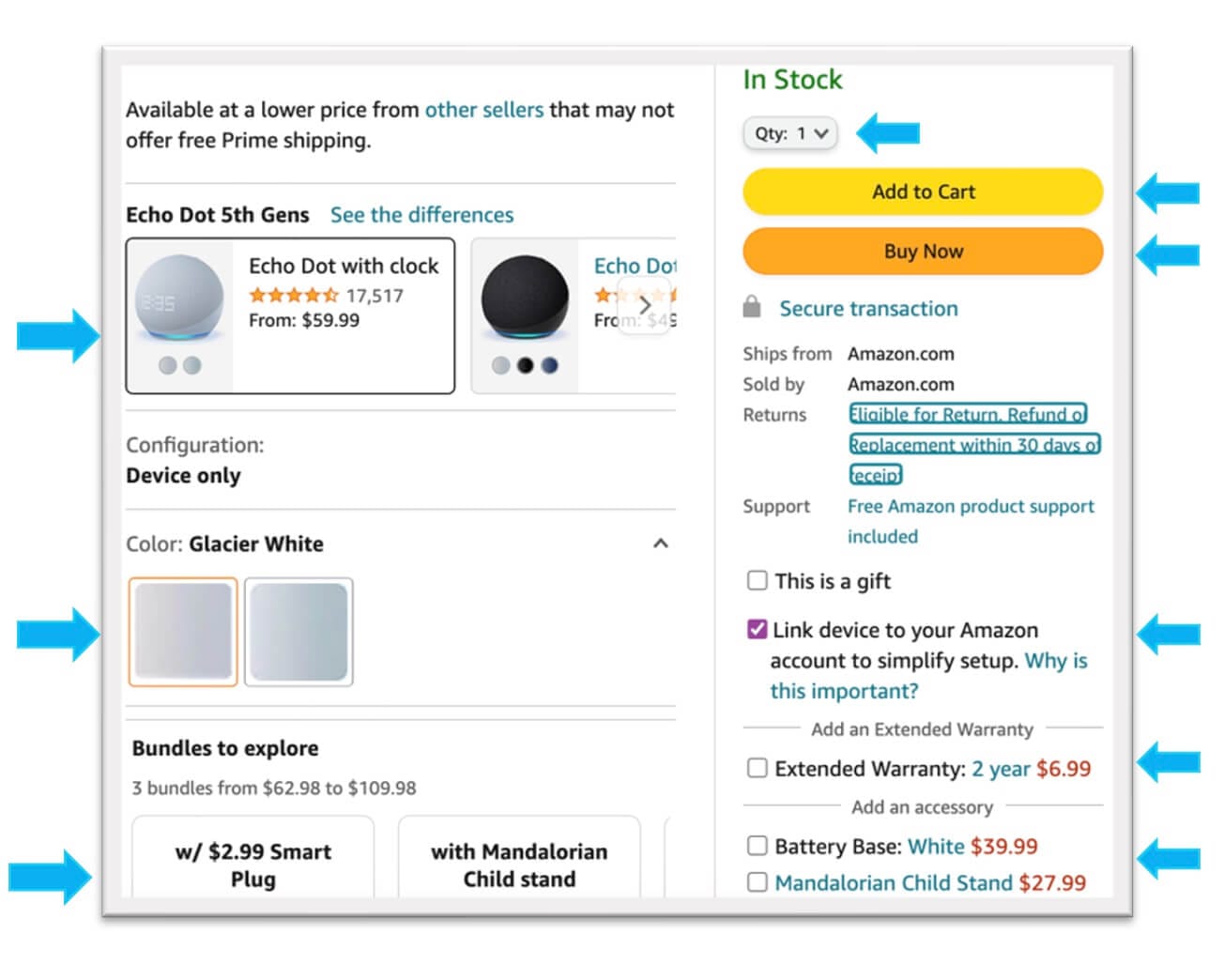
Amazon’s content is well distributed across the eight steps of the customer journey, ensuring a consistent and engaging experience from awareness to post-purchase. In the sales content experience specifically, Amazon leverages a variety of content types to support informed decision-making. These include detailed product descriptions that highlight key features and benefits, high-quality images that offer visual clarity, and user-generated content such as customer reviews and ratings, which build trust and provide social proof. This mix of informative and persuasive content helps guide customers smoothly toward a purchase.
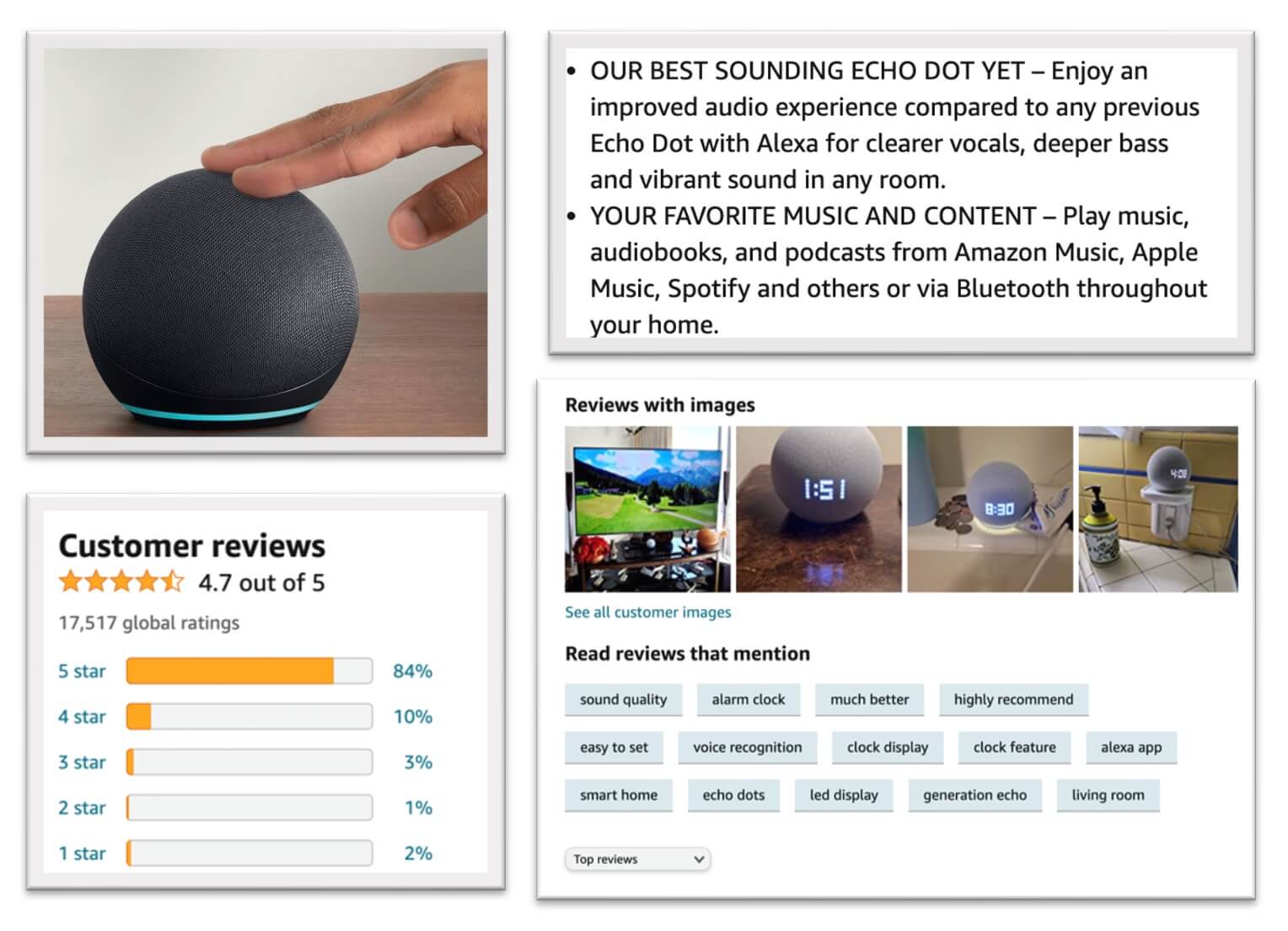
The support content experience focuses on providing users with the information they need to find answers to their questions or resolve issues quickly and efficiently. Amazon offers a range of resources to support this, including community forums where users can share solutions, step-by-step how-to guides and videos for common tasks, and direct access to Customer Service for personalized help. Additionally, Help pages offer comprehensive information on a wide range of topics, while the Influencer Program and social media channels extend support through trusted voices and real-time engagement. Together, these tools ensure users feel supported at every stage of their experience.
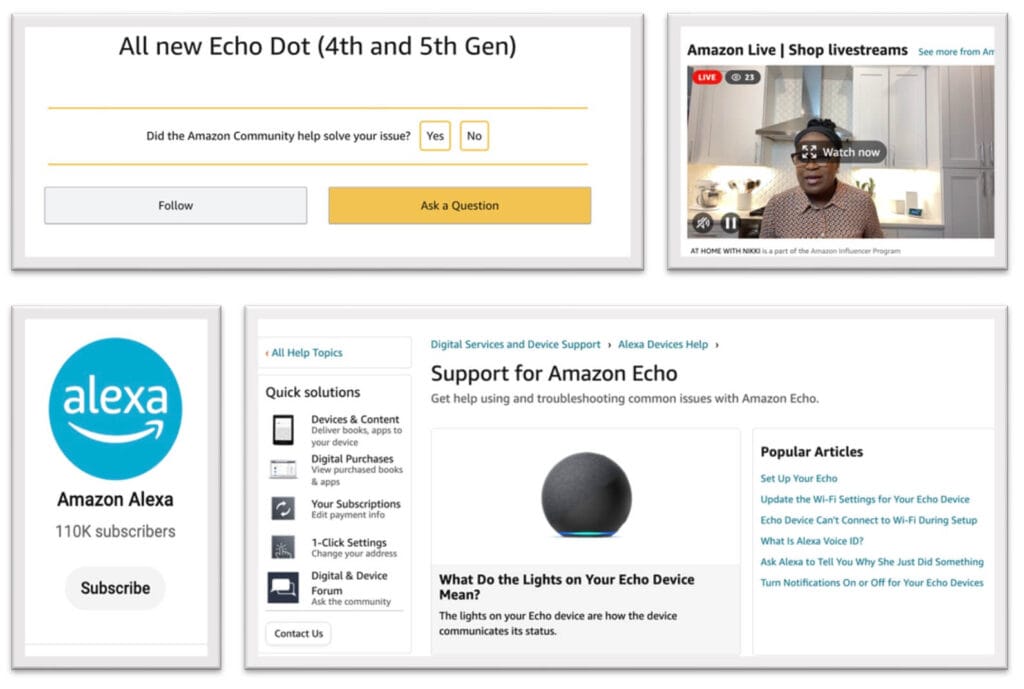
Inventory Channel Categories
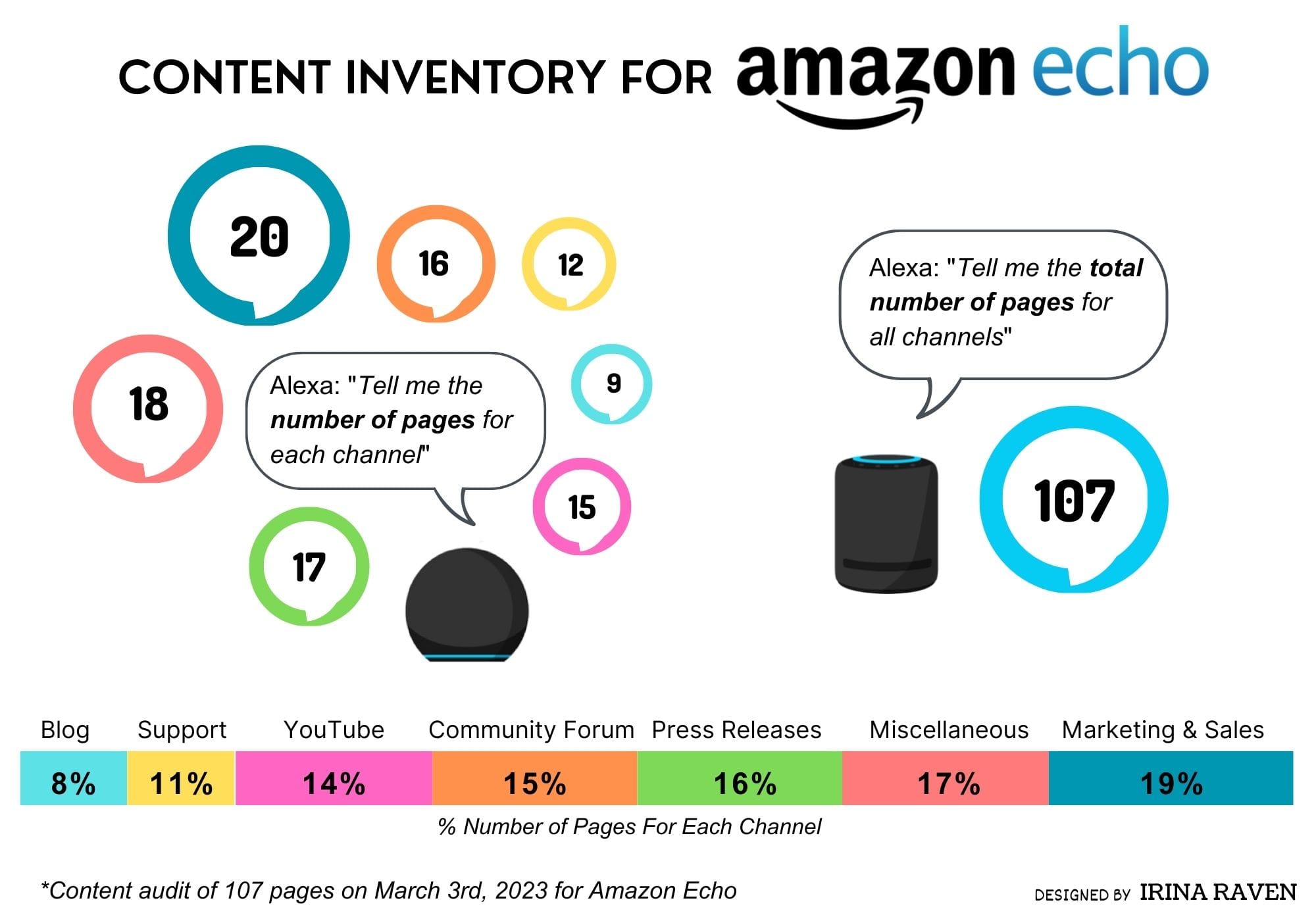
Based on the content audit conducted on March 3rd, 2023, a total of 107 pages related to Amazon Echo were analyzed across multiple content channels. The inventory reveals a well-distributed content strategy, with the largest share allocated to Marketing & Sales (20 pages, 19%), followed by Miscellaneous content (18 pages, 17%), Press Releases (17 pages, 16%), and Community Forums (16 pages, 15%). Other significant content areas include YouTube (15 pages, 14%), Support (12 pages, 11%), and Blogs (9 pages, 8%). This breakdown highlights Amazon’s strategic use of varied platforms—from official support to user-generated forums and video content—to deliver a comprehensive and accessible content experience for Echo users.
Voice of Tone
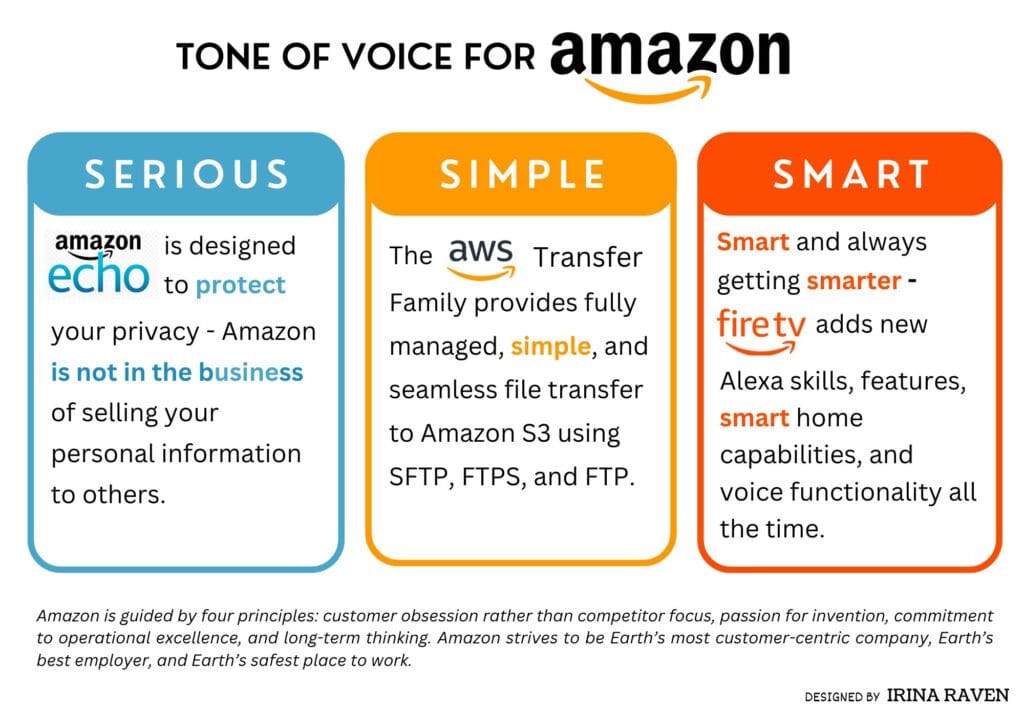
Amazon’s voice of tone can be summed up in three words: Serious, Simple, and Smart. It’s serious in the sense that it communicates with clarity and professionalism, especially when it comes to product information and customer support. At the same time, the tone remains simple, using plain language that’s easy to understand, even when explaining its products. Finally, it feels smart, reflecting Amazon’s innovative brand by anticipating user needs and providing intelligent, well-structured content. This consistent tone helps build trust and makes the user experience feel efficient and reliable.
UX Content Findings
Amazon demonstrates strong performance in crafting link labels that are both informative and enticing, effectively guiding users through the site and enhancing overall navigation. These clear and engaging labels contribute to a positive user experience by helping visitors understand exactly where a link will take them. However, there is an opportunity for improvement when it comes to the use of alternative text on images. The current implementation is inconsistent across different pages, which may hinder accessibility for users relying on screen readers. By standardizing and enhancing alternative text, Amazon can further ensure an inclusive and seamless experience for all users.
Many link labels on the internet fail to engage users effectively, often relying on vague phrases like “Read More” that provide little context about what lies ahead. According to the Nielsen Norman Group, it’s crucial to replace this generic language with descriptive labels that clearly communicate the destination or purpose of the link, allowing users to make confident, informed decisions. A strong example of this can be seen on Amazon’s website, where a link labeled “Learn more about Alexa Entertainment” intuitively guides users to relevant content. Instead of guessing, users immediately understand what they will find, making the interaction smoother and more user-friendly.
Here are two additional examples, each demonstrating how well-crafted link labels can provide users with clear, descriptive cues about the content they’ll encounter if they choose to click, thereby improving navigation and reducing uncertainty.
In the image on the left, the link labels provide users with a clear and specific idea of what to expect—for example, “Echo device models” and “add the Echo Sub for increased bass” both offer meaningful context that guides user expectations. Similarly, the image on the right includes a well-written link, “Learn more about Amazon Kids+” which clearly communicates the topic of the linked content, making navigation more intuitive and user-friendly.
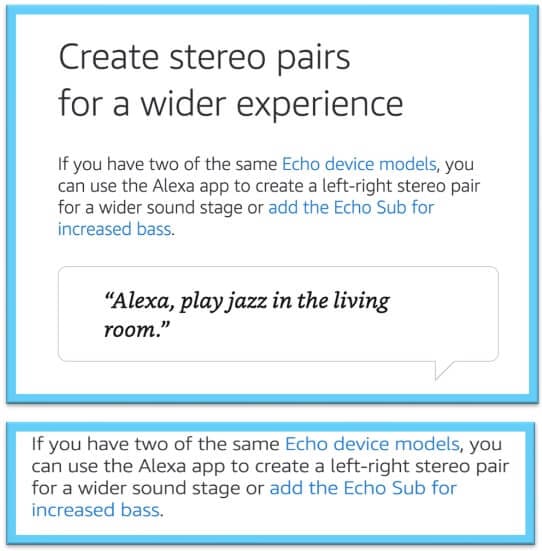
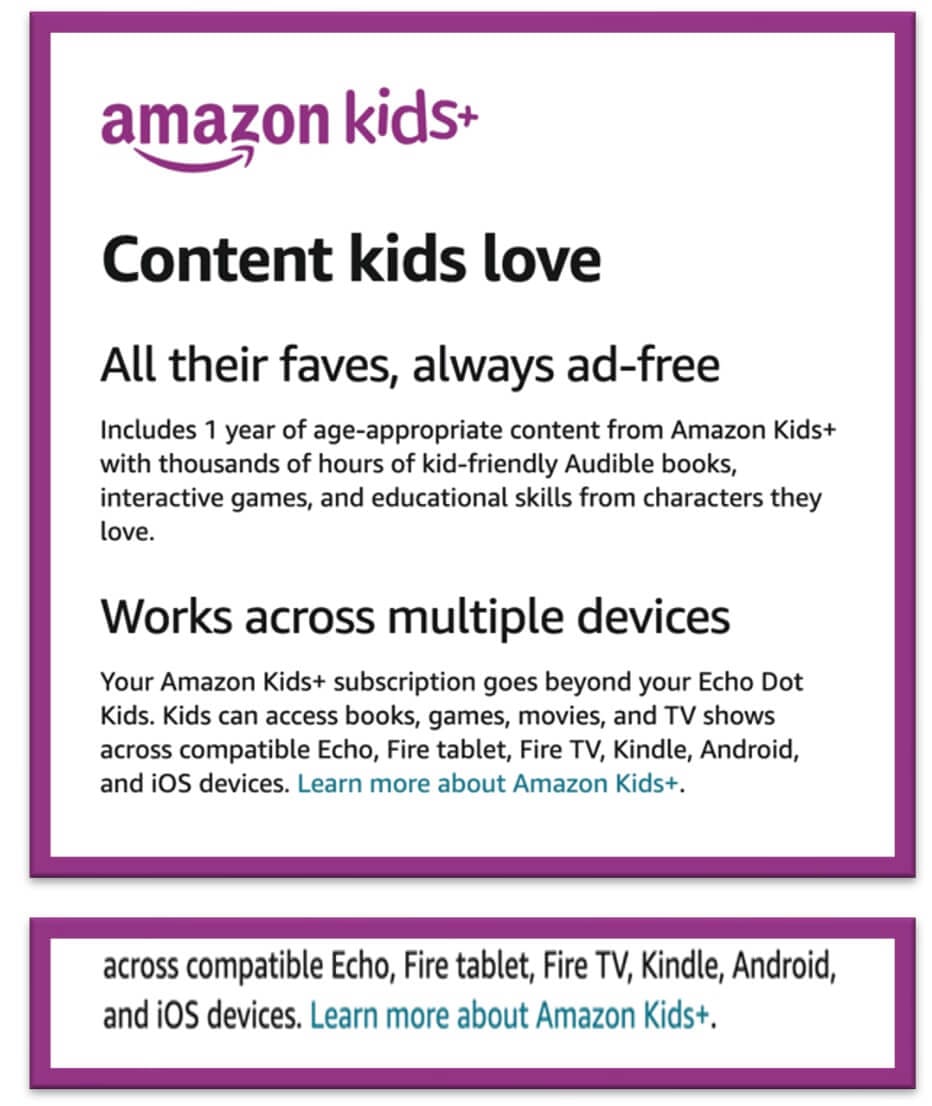
In terms of areas for improvement, Amazon should pay closer attention to the use of alternative text (ALT text) for images and other graphic elements. According to the Nielsen Norman Group, ALT text plays a critical role in accessibility by providing meaningful descriptions of visual content for users who are blind or visually impaired. Properly implemented ALT text ensures that all users, regardless of ability, can understand and engage with the information presented on a webpage. In this example, the absence of a description for the graphic element highlights a missed opportunity to support inclusive design and improve the overall accessibility of the site.
During the evaluation, some pages on Amazon.com demonstrated strong accessibility practices by including alternative text descriptions for all images and graphic elements. However, other pages were only partially complete, with some visuals lacking any descriptive text. This inconsistency across the site indicates that Amazon has not yet implemented a standardized approach to alternative text usage, which can negatively impact the user experience for individuals relying on screen readers or other assistive technologies. Ensuring consistency in ALT text application is essential for maintaining accessibility across the entire platform.
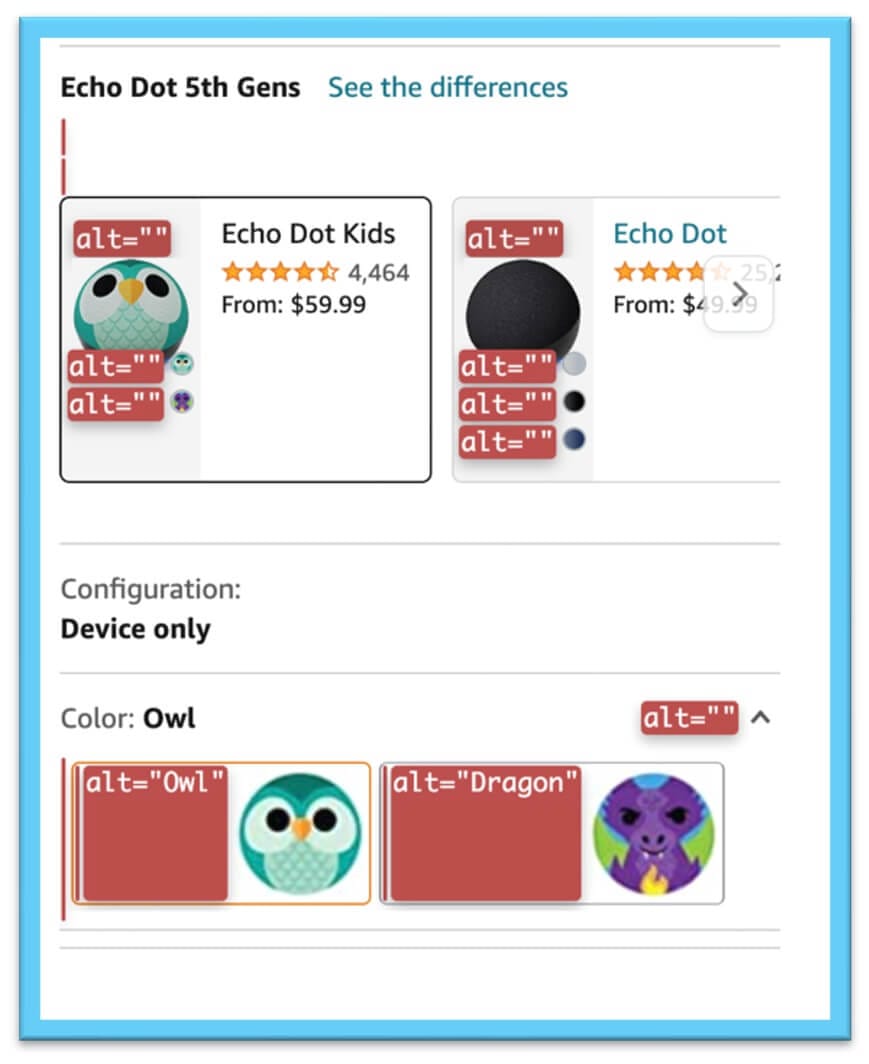
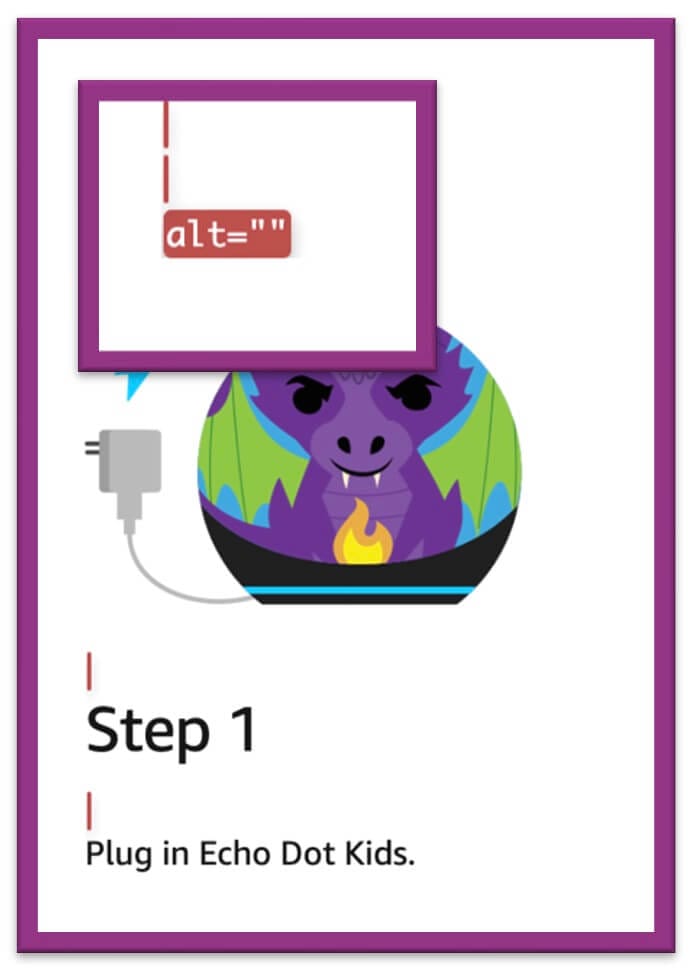
Conclusions
Amazon is a global leader in e-commerce and serves as a model for countless entrepreneurs and businesses around the world. It’s encouraging to see that they are setting a strong example when it comes to using descriptive and engaging link labels. This thoughtful approach significantly enhances the user experience (UX) throughout the entire customer journey—from browsing and purchasing to post-sale support. By making navigation more intuitive and informative, users are empowered to find the information they need independently, reducing reliance on customer service or in-person assistance.
However, there is still room for improvement in terms of accessibility on Amazon’s website. According to an article published by the World Health Organization in October 2022, over 2.2 billion people globally live with some form of near or distance vision impairment. In this context, alternative text is not just a best practice—it’s a fundamental requirement for ensuring inclusivity. Consistently implementing meaningful ALT text across all pages is essential to delivering a truly exceptional and accessible UX for every user, regardless of their abilities.

